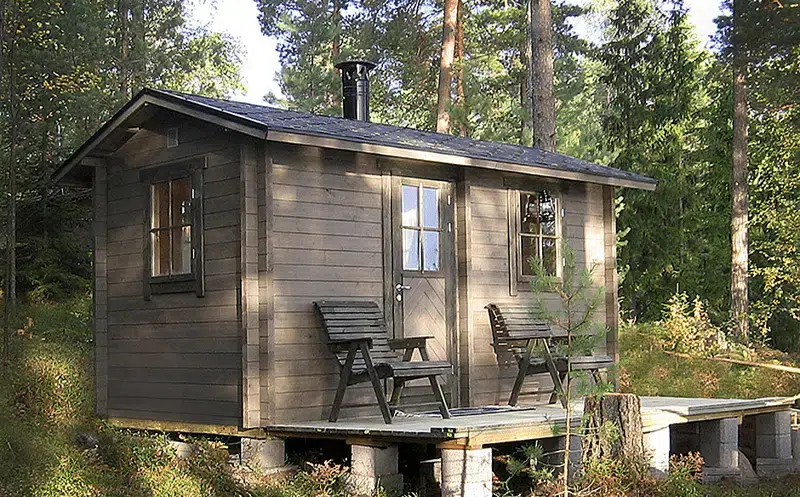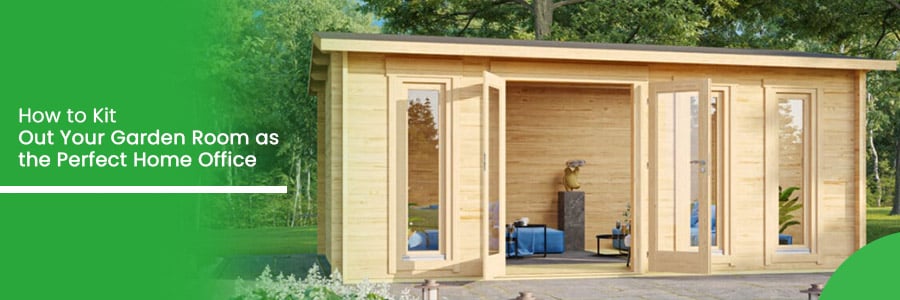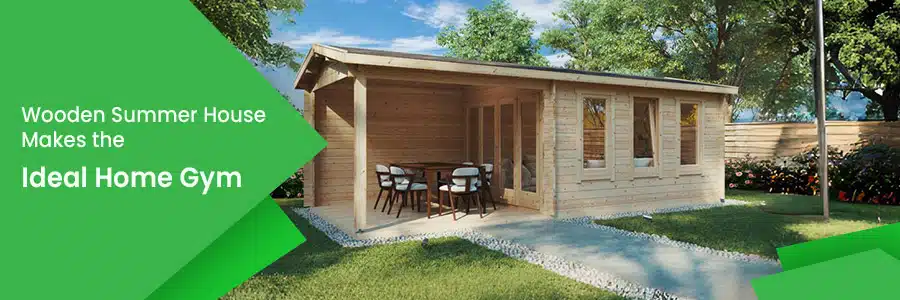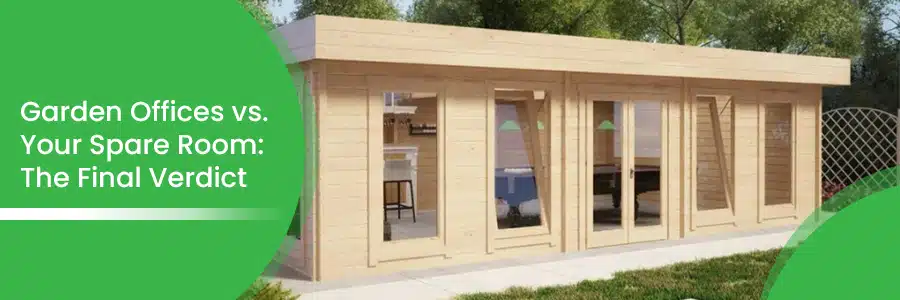Some Interesting Facts About Our Timber of Choice for Summer Houses – The Nordic Spruce
21.11.2018
From summer houses over garden sheds, wooden garages or garden saunas to large log cabins: We build all our wooden buildings from Nordic spruce. More than enough reason, we think, to eventually have a closer look on this kind of timber, and at the tree that we get the timber from.
What kind of tree do we build our summer houses from?
Spruces are large, evergreen trees that can be found all over the globe. They prefer northern cold climates or higher mountain areas. There are about 35 species in the genus spruce (Picea) that all grow up to be large trees of up to 80m tall and stems that can reach diameters of 2m, in extreme cases even 4m. They usually reach ages of around 500 to 700 years, however, clones have been found to be much older.
Clones emerge when branches of spruce trees touch the ground, grow roots and new stems emerge from there. One of these Norway Spruces lives in a mountainous region in Sweden. It has been named “Old Tjikko”, is of more than 9550 years of age, and still in good health. However, we must admit that our summer houses can reach similar ages only with very good maintenance.
There is only one species of spruce local to Europe
Our summer houses are made from Norway spruce, the only species native to Europe even though botanists have named more than 100 different forms and varieties within this one species. We will come to the difference between spruce cultivated in mild climates and those growing in cold climates where they originate from, and where we call them “Nordic spruce” later.
Norway spruce plays an important role in forestry because of its straight stems, quick growth in mild climates, absence of large forking branches, and a steady good profit which derives from a steady demand.
The high demand comes from relatively low prices compared with other kinds of timber, a good workability, high sturdiness combined with low weight, and a broad variety of possible usages.
Whitewood is one name for spruce timber, because other than pine, larch, cedar, or yew, spruce has no darker heartwood. Heartwood and sap wood are of the same light colour which is a favourable trait for many usages. It is used as building wood, for crates, particle board or laminate, interior design, building summer houses, and even aircraft. Stradivari built his famous violins from spruce, ship’s masts used to be spruce stems because of low weight and high sturdiness and the top sides of many acoustic guitars are also spruce.
Popular species of spruce make decorative, wintergreen trees around the summer house
The Norway spruce (Picea abies) is the only local species of spruce in Europe. However there are quite a number of different species found in gardens. These decorative species are often of lesser heights or smaller diameters like the slightly slimmer Serbian spruce, the Sitka spruce, the blue spruce, that makes popular Christmas trees, and just grows to a maximum size of about 15 metres, thus popular also in smaller gardens, the Oriental – or Caucasian spruce, with dark-green glossy needles, the Brewer spruce, also called “weeping spruce“ because of its hanging, pendulous branchlets, and some other species.
If your garden is too small to host a 50 metres tall tree with a diameter of 4 to 5 metres in branches growing directly over the ground next to your summer house, until it becomes tall enough for the lower branches to be cut off and form a majestic crown over the roof of your summer house, then there are also dwarf-forms available like the hedgehog dwarf white spruce (Picea glauca ‘Echiniformis’), a mutation of the Northern American white spruce, or another variety from the white spruce: the Dwarf Alberta spruce (Picea glauca var.albertiana ‘Conica’) that will hardly ever exceed two metres of height and can even be cultivated as bonsai.
However, local Norway spruces are also easy to cultivate in gardens, completely frost resistant, of course, and they can also be cut back and even serve as wintergreen hedges.
Spruces also have medical value
If you have a spruce in your garden around the summer house, you might be interested to know that spruce has a very old tradition of being used as a remedy for some ailments. There are recipes as early as the 11th century to be found for the use of spruce as an ailment against cough, bronchitis, sinusitis, muscular pain, or rheumatism.
The young sprouts eaten fresh, or cooked as tea or soup are a very valuable vitamin-rich food. In the old times seafarers used to take young spruce shoots with them as a remedy or a preventive measure against scurvy.
The needles and branches contain a resin with essential oils that not only exude a pleasant odour in log cabins and large summer houses, but also clear the respiratory passages, kill pain, act anti-inflammatory, and expectorant when inhaled or ingested as pills with oil, teas, or spruce tip syrup.
Ointments from spruce needles and oil are used against aching muscles or joints. The pleasant odour is used in perfumes, soaps, foam baths, and deodorants.
How do you distinguish a spruce from a fir?
If you think about making some of these remedies for yourself in your summer house now, you should know how to distinguish a spruce tree from a fir. The easiest way to do it is to test if the needles sting. If they do, you have a spruce. Fir needles are not sharp enough to really sting. The next test could be trying if you can roll a needle between your fingers. This usually only works with spruce’s needles, because fir needles are too flat to do that.
If you look at large trees, you can see that firs are flatter on top while spruces tend to have sharp tops.
What about our timber for summer houses, the Nordic spruce?
Summer houses built from Nordic spruce are relatively new to Central Europe, because Nordic spruce is by far not as cheap to purchase as locally grown spruce. Nordic spruce was first imported to the UK as saunas, because the dense wood was perfect to withstand these conditions.
Western European climate is really much too warm for the Norway spruce. Due to the “heat” and due to the “long” vegetative periods, spruces grow very quickly in mild climates which is, of course, one of the reasons for their popularity in forestry.
However, the wood will often have distances between the annual rings of 4 to 6mm, and the timber then qualifies as softwood.
In high mountain areas or in northern climates spruces will have to endure much shorter vegetative periods, they will grow much slower and the timber will show distances of just 1 to 2mm from one annual ring to the next. The resulting timber is much more sturdy and more durable. Nordic spruce is denser, and it has smaller, but tightly connected cross grains from small branches than spruces grown in Central or Western Europe.
Luckily we have this kind of high quality spruce growing literally at our doorsteps. For us it is not too expensive at all, and we are happy to pass this advantage on to our customers with very competitive prices for high quality summer houses.
For any questions, please contact us or call Oliver at 020 3807 0369!
Categories:
BlogWant to discuss over phone. Let us call back to you
If you need any additional info regarding any product, please fill in the below form and we will get back to you, usually the same or next working day.
Have any questions regarding some product?
If you need any additional info regarding any product, please send us your questions.




